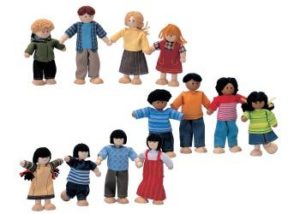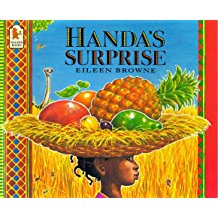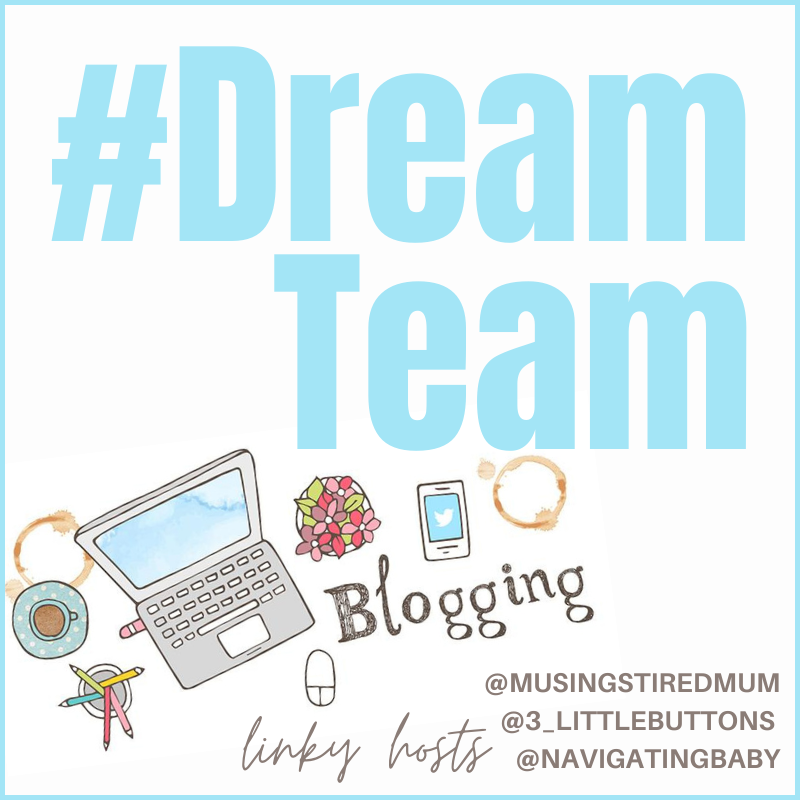Elizabeth has asked about this subject as she is new to child minding and therefore unsure how to approach these sensitive topics with the children in her care.

When I was a child minder I borrowed toys from the toy library which was organised by the network coordinator there was a good supply of equipment covering such subjects which members could borrow for no charge.
I once had a set of plastic figures which were meant to represent disabled people and to give the children an understanding, one of the figures was a boy wearing calipers on his legs, for support, a child in my care thought that he was wearing football socks and so made the figure run really fast around an imaginary football pitch (so he didn’t grasp the concept at all) another figure was a lady in a wheelchair, again the children didn’t understand and asked me why a lady was in a pushchair? which I explained
 . I am now a wheelchair user myself and often while I am out I see children staring and I know that many are thinking the same thing, why is she being pushed in a pushchair? I don’t mind, at all and was pleased when once a boy asked me what the joy stick on my power chair was for. I gave him a demonstration and he was well impressed, his dad even let him sit on my lap and I took him for a little ride.
. I am now a wheelchair user myself and often while I am out I see children staring and I know that many are thinking the same thing, why is she being pushed in a pushchair? I don’t mind, at all and was pleased when once a boy asked me what the joy stick on my power chair was for. I gave him a demonstration and he was well impressed, his dad even let him sit on my lap and I took him for a little ride.
I also had a good selection of multicultural and disability awareness posters that I displayed on my play room walls, I obtained these from publications such as Nursery world and Nursery education.
My son attended a village school were they were several children who had special educational needs (2 had autism, 1 was a wheelchair user and 3 had down syndrome). As I took the children that I was caring for with me on the school runs, they often meet these children so I mentioned this to my Ofsted inspector during her visit.
The public library has a great choice of books aimed at children covering both of the above topics, one of my favourites was Handa’s surprise as it has wonderful. colourful illustrations (It doesn’t do any harm to have a few of these books out during an inspection)

I once had a doll that was supposed to represent down syndrome, the idea was that a child with the condition would see a doll that looks like her, rather than the usual perfect looking doll.

I showed this toy to a father of a child with Down syndrome and asked what he thought of it, he said that it offended him and he didn’t understand why anyone would want such a toy! That was his opinion, I’m sure others may welcome it
I also had multicultural dolls,; Chinese and Asianand a couple of black dolls that I purchased quite cheaply from a leading department store.
There are many multicultural dressing up costumes available, I was extremely fortunate in that I child minded a boy who was half Indian, he went to a family wedding and wore a traditional outfit, his grandmother gave it to me afterwards, as she said he wouldn’t wear it again.

I once came across a disabled lady in the park while I was walking my dog with the children, her carer told her that a dog was approaching ( she was also blind) the lady asked if shcould stroke my dog, so I picked him up and she did.Later I discussed with the children how the lady would have benefited from this. I mentioned the incident to my Ofsted inspector, she was very interested and spoke to the children about the event.
I hope this has helped you to understand how to introduce multicultural and disability awareness to the children in your settings, Elizabeth, if you need any further information please let me know.
As always questions/comments are welcome and share on social media if you think others may like to read this
Until next time
Karen
X
OfLinked with


Discover more from The Next Best Thing To Mummy
Subscribe to get the latest posts sent to your email.
What a really interesting blog Karen. It would be wonderful if people with special needs were made to feel accepted by others. Love the idea of the little dolls and of course the posters. I think these special children are lovely and their health issues give them other attributes always being happy and cheerful being just two of them.
I think inclusion needs to be natural. A part of everyday life. Starting young helps that. #mixitup
Excellent points! I’m in the beginning stages of trying to write a series of children’s books addressing disabilities for young children to be exposed to and understand.
Thanks, I review children’s books, if you are interested
I’ll keep that in mind when I get to the publishing stage.
You are a wonderful child minder for raising awareness to the beautiful differences that make us all uniquely wonderful. This is so refreshing to read and to know kids are exposed to this inclusion culd only make the world more empathic. Thank you! #thesatsesh xoxo
Thanks very much for your lovely comment, unfortunately I am no longer able to child mind due to ill health, but I did do my very best while I was x
Oh no! Sending you healthy vibes! 💕
A toy library is such a wonderful idea! Differences are what makes us all unique! #keepingitreal
Very nice. I think kids need to learn the differences in others as early as possible. #TriumphantTales
Very nice. I think that kids need to learn the differences about others to make them better human beings. #TriumphantTales
It is great you are trying to raise awareness in every way you can. It’s good to know you are happy to be asked about your wheelchair to help children understand too.
My daughter has grown up in three different countries so is used to different races cultures and religions.
just today she was asking about a boy with Down syndrome and I tried to explain. It is not easy to know how well she understands aged 4, but I tried.
A toy library is such a great idea! Thank you for joining in at #TriumphantTales, we hope to see you again next week!
#back for a blogger love visit from #globalblogging xoxo
Thank you for the ideas to introduce children to people who have disabilities. So often people skirt around the issue instead of being honest. I have muscular dystrophy and spent a year in a wheelchair during my childhood surgeries – I had to keep my feet elevated at all times. So many people would stare. #GlobalBlogging
Back from #triumphanttales xoxo
A toy library is a great idea. I’m sure my mum once joined one. Discussing disability shouldn’t be a taboo. #keepingitreal
Being able to discuss topics relating to disabilities, ethnicity and subjects that can lead to debate is a brilliant thing to do. I find it fascinating and wonderful when you can talk about subjects with the basis of wanting to either gain a better understanding or to assist in someones education. Great post and thank you for linking it up to the #mainylovessummer linky.
Mainy x
Great idea , inclusivity needs to start from a young age . #triumphanttales
I think it’s so important to teach children to be inclusive from the start. Brilliant read. thanks so much for sharing with #Blogstravaganza xx
Hi Karen, it’s important that children are aware that we aren’t all the same from a young age. One thing I’ve noticed is that once a childs curiosity has been fed they carry on like usual. Children are like sponges and learn what they here from a young age and it can stay ingrained, which is why raising awareness about differences from a young is so important.
Thank you for linking up with #keepingitreal.
xx
Great post! I had to explain to my 4 year old why another little girl her age was “fat” or why another man who walked past us one day was “old” and why saying these things out loud is rude. I can’t really explain why someone is overweight but I can guess. But guessing could be totally wrong so I tried to explain to her that everyone is different and if someone called her “ugly”, would it hurt her feelings? She said yes. So I said, ok, it’s the same as calling someone fat or old. It’s not ok to call people that or say it out loud in public because you can hurt their feelings too.
On another note I thought it was interesting that people would shy away or become embarrassed of their cultural traditions or their obvious physical disabilities. I think these things should be embraced. It won’t make you happier to run away from them. Little kids like my daughter need to be taught everything in life and that includes why people are different and what kind of disabilities people can have and why we are all different colors and sizes as well. #Alittlebitofeverything
Totally with you, thanks for your great long comment x
My son has autism, and it’s scary sending him out in the world. Some people are not very understanding. I love love love this post!! x
Some great tips. I find often that George doesn’t even notice others differences. I think one of the only think George he’s ever questioned is a lady in a wheelchair but I try my best to sensitively explain and educate him.
#mainylovessummer
Your post leaves me grateful for modern devices that permit mobility for the disabled so our kids can see and get acquainted with them. So important for an awareness of and appreciation for all kinds of life.
Absolutely, Michele, thanks for your comment
What a great childminder you are to consciously make choices about the toys and books on offer to the children you looked after, making sure they were inclusive. I think every child should be able to see themselves in books and indeed toys. Thank you for joining us for the #DreamTeamLinky
Thanks for your kind words, Annette, I did my best, which paid off at my inspection when Ofsted graded me as outstanding
Inclusion and inclusivity is so important. I remember one child had a disabled sibling and when the class were talking about disability he was the only one to know it wasn’t just the elderly in wheelchairs. Thanks for linking up with #dreamteamlinky
When I was volunteering at the local school, a child asked me why I was old, I think and hope that he was referring to the fact that I am a wheelchair user thanks for your comment, Laura
When one of my kids were little, they stared at a person in a wheel chair and then loudly asked what was wrong with them. I was so embarrassed (at my failing as a parent) that I got that Fisher Price bus with the boy in the wheelchair so we could have lots of discussions. I think so much stuff doesn’t come up because it’s not part of our personal universe. I love those toys and I think it’s okay if the kids doen’t get it at first, as long as you have the conversations that follow. #Dreamteam
As I mentioned in my post. Lydia, children will often stare at me in my wheelchair and I don’t mind at all, it’s breaking down barriers, thanks for all your comments
This is such a fab post. I remember reading it before and thinking how amazing it is that you put so much effort and detail into making your setting feel so inclusive. I know you don’t childmind now, but I hope this post finds it’s way into the right hands for inspiration. Thank you for joining us for the #DreamTeam xx
Thanks for your kind words Annette
I think schools are providing more resources for inclusivity than they used to. I also think there needs to be more awareness of unseen disabilities. Thanks for linking up with #DreamTeam
Absolutely. Laura
Thanks for your comment, Esme,I do already take part in your linky party